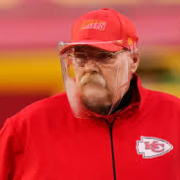CBS football analyst, Tony Romo, is a football savant. It’s like he’s watching a replay of the game and the viewers are seeing it for the first time. His predictions are never wrong. That is, until last Sunday.
The Kansas City Chiefs were holding a 5-point lead over the Cleveland Browns. Their star quarterback, Patrick Mahomes, was sidelined after sustaining a concussion. The momentum was in the Browns favor. Facing a 4th and inches with 1:15 remaining the Chiefs head coach, Andy Reid, had a choice:
- Punt and force the Browns to drive the length of the field with no timeouts…or
- Go for the first down and try to win the game.
Reid sent his offense onto the field. In the booth, Romo explained how the Chiefs were going to create motion and try to draw the Browns offside. He commented on how they wouldn’t run a play-they would likely take a timeout and punt. In the middle of his sentence, the Chiefs did the unthinkable…..they snapped the ball. Journeyman quarterback, Chad Henne, threw a short pass for the first down. The shocking call solidified the win.
If Reid would have chosen to punt, no one would have criticized. The Browns would have gained possession with poor field position, no timeouts and roughly a minute to play. The safe play was to punt.
In fairness, the game of football has embraced analytics more recently. The numbers frequently show the team should go for it on 4th and short and not punt. However, I still don’t know many, if any, coaches who would have went for it in this situation; let alone with their backup QB throwing a pass!
How did Kansas City Chief Head Coach make the decision to pass on 4th and inches with the game on the line? What allows someone to make a call that goes against popular opinion?
I’d love to take Andy Reid to lunch and ask him about his decision. I refuse to believe it’s as simple as him being a riverboat gambler. I also don’t believe it was him relying on straight data and analytics. I believe it’s deeper than that.
For what it’s worth, I believe it came down to the capital he’s built. He has been a head coach for 22 years. In his 8 years with the Chiefs, he has a .711 winning percentage including winning the Super Bowl last season. To put that in perspective, the coach often regarded as the best ever, Bill Belichick, has a winning percentage only slightly better with the New England Patriots (.726).
Longevity alone, however, doesn’t buy you capital. It was clear in the post-game interviews how much the players believed in their coach and each other. Decisions, as it turns out, have a much greater chance of success if the ones executing believe in the plan. There is also the capital with the front office and ownership. It’s not simply their words. There’s a feeling when you know you are fully supported from those above you. Recency effect also plays a part; winning the Super Bowl last year helps. The fans and media are more lenient with a recent winner.
What can we learn from this? First, how can a leader expedite the process of gaining capital? It’s critical to identify the key stakeholders and begin intentionally building trust. Every behavior is either deposit or withdrawal..
Second, if we are in management or the front office, how can we provide the support to allow our leaders to make real-time, bold decisions. In other words, is there a way to empower boldness from a leader who’s lacking the pedigree? I’m convinced, a rookie head coach could not have made this controversial decision.
Making decisions is a requirement for leaders. Do we want leaders to go rogue, dismiss data, and always “go with their gut?” Of course not. Do we want them to always play the percentages knowing over time the odds win? Heck no. Do we make the call based off optics alone? I don’t think so.
We can never forget that sports and business are “played” by real people. People are messy. Life is messy. Situations are complex.
Feel is real. Call it what you want: gut instinct; intuition. I call it information that can’t be quantified. Things such as the look in the collective defense’s eyes saying, “we can’t stop this team.” A few guys who are hurt or injured. Knowing the tendency of the officiating crew to call pass interference. Just because it is hard or impossible to measure doesn’t mean it doesn’t exist.
One final thing, once we’ve built up the capital we must display the courage to use it. We won’t have the capital forever. For example, if Henne’s pass would have fallen incomplete, Reid’s capital would have suffered. The media would have crushed him, some players would have questioned the call, and I’m sure he would have received feedback from the front office. Things would have been different next year.
I guess the bottom line is this: you need the support of everyone involved to make your best decisions. In order to gain this trust, there must be a track-record of positive interactions and outcomes. And, once that capital is earned it’s having the courage to shoot your shot!!
Andy Reid did, so can you and I.
I’ve watched the clip of this play 100 times. At first, I thought they caught the Browns off guard. They really didn’t. It wasn’t like Tyreek Hill was standing wide open. He had to beat his man and Henne had to trust the route. They executed the play. My fascination stems from how easily that play could have not worked. How easily the Browns could have taken over possession at midfield. How harshly this decision would have been criticized.



I love reading through a post that can make people think.
Also, many thanks for allowing for me to comment!
This website was… how do you say it? Relevant!! Finally
I have found something which helped me. Appreciate it!